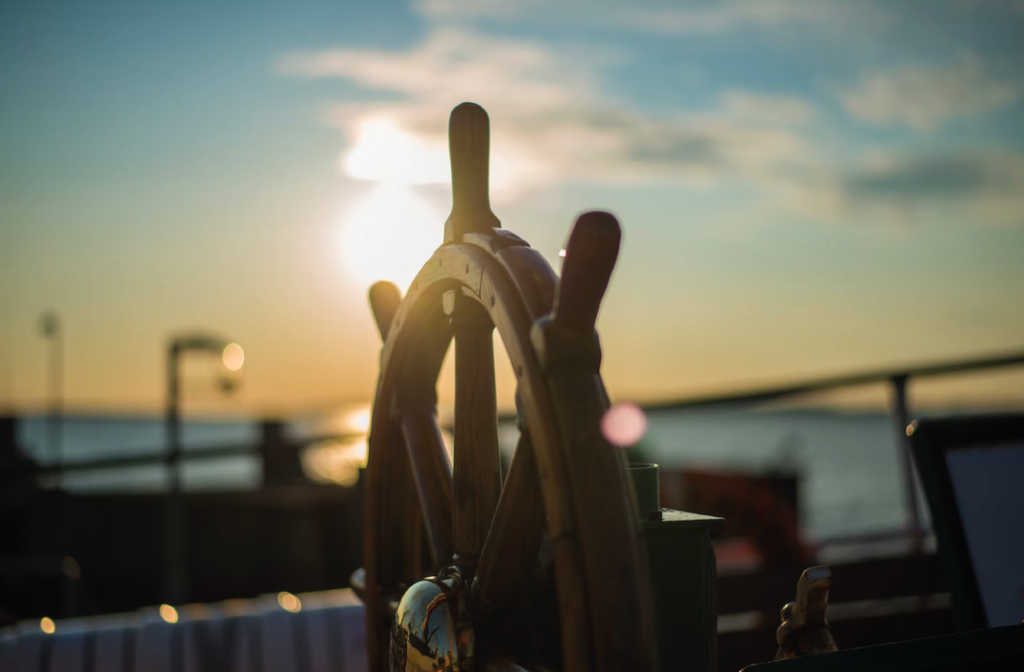by Matthew A Williams

What is a Sea Shanty?
The sea shanty is a genre of folk music, commonly sung as a work song to accompany labour on cargo ships.[1] They came to prominence among seafarers during the mid-1800s. The origins of many sea shanties can be traced to various places across the Atlantic including the UK, Caribbean, the southern regions of the USA and South America. The spelling and precise origin of the word shanty is unclear, and the alternative spellings, ‘chanty’ or ‘chantey’ are sometimes seen.
Shanties were a critical part of life at sea for merchant sailors.[1] Many actions aboard ships required coordinated efforts by the sailors, and shanties existed to synchronise the hard physical labour. Shanties were generally associated with specific types of action; pumping, turning the capstans on sailing ships or ‘hauling’ (pulling), for example hoisting sails. Sea shanties may be considered communal music because of the shared activity involved. They are understood to have created a particular bond of unity among seafarers, as they performed arduous tasks aboard the ship.
The shanty is an example of the resilience of the human spirit. In spite of hard conditions, the shanties provided welcome relief, and motivation to keep going during long, hard, physically exhausting days. The sailors who sang sea shanties were mostly men and often had little formal education. Sea shanties frequently contained obscene and offensive lyrics as they were heavily influenced by discriminatory ideas about the value of women in society, and not generally permitted on Royal Naval vessels because of their associations with profanity. Historians and collectors have tended to sanitise the lyrics so that they can be sung more widely.[2] This complicates their performance and some enthusiasts question the authenticity of sea shanties with altered lyrics.
Other Sea Songs and Ballads
The sea shanty is unique among maritime songs and should be distinguished from other sea songs and ballads. Off duty, sailors were known to have an interest in a wide variety of musical styles from love songs to drinking songs. These may have been learned onshore and sung to their peers on land. These songs are sometimes called ‘forbitters, ‘forecastle’, or ‘main hatch songs.[3] They take their name from the part of the ship where off-duty crews would gather to sing and socialise. They are not generally distinguishable by style from other kinds of songs sung for recreation either at sea or on land. But some of these songs were adapted for use as shanties such as “The Golden Vanity”.
Characteristics of a Sea Shanty
There have been many discussions about the difference between the shanty and other types of sea song. It is agreed that the shanty was specifically a work song and can be identified by a few characteristic features including structure and length.[2] Sea shanties have a call and response structure. “The Wellerman”, sung by Nathan Evans, which shot to prominence on TikTok in 2021, is technically not a sea shanty because it does not follow the typical call and response structure.[7]
‘One member of the crew, the shantyman, would sing the short lines that carried the narrative of the song and set its pace. In between, the crew would sing the even shorter chorus, which was stressed on particular sounds as everyone pulled or heaved in unison. By all accounts, this provided encouragement and lightened the work.’[3]
The lead is usually taken by the sea shanty leader (known as a ‘shantyman’) who will set the rhythm and lead the group in singing well-known verses. Improvisation is an important part of the sea shanty, as is the ability to add new choruses. Sea shanties are not usually continuous narrative songs because tasks could take differing amounts of time, depending on the energy of the crew and weather conditions.
History of the Shanty
Although forms of coordinated singing have existed for thousands of years, the majority of sea shanties are dated between 1820 – 1860.[1] Most academics agree that the sea shanty was developed after the Napoleonic Wars when there was a great expansion in transatlantic trade and travel.[2] Sailing vessels were developed to cope with this expansion; these vessels were high speed, large capacity, with multiple masts. Once the commercial boats began to be replaced by steam, the use of sea shanties began to decline.[3]
Stan Hugill (1906 -1992) was known as one of the last true shanty men and wrote extensively about the history and origins of the sea shanty. His best-known book is Shanties from the Seven Seas.[1] In addition to Hugill, other collectors of sea shanties included Cecil Sharp (1859 – 1924) and Percy Grainger (1882 – 1961) who collected sea shanties from retired seafarers.
Black Seafarers of the Atlantic and the Sea Shanty
Early British shanty collectors sought to preserve a sense of national identity through documenting these songs. [3] However, they were also aware of the inseparable history of Afro-Americans and Afro-Caribbeans with sea shanties.
Regarding the Afro-American influence on the sea shanty, Frank Bullen (1857 – 1915) wrote that, ‘the majority of shanties were negroid in origin.’[4] He had the opportunity to work on many different sailing ships in the West Indies and US.[3] During the 1870’s Bullen was able to document his experiences as a shantyman.
British sea vessels often had multi-ethnic crews as sailors were recruited from across the colonies. [5] One example of a work song sung by black dockworkers in the Georgia Sea Islands of the southern United States was “Pay Me My Money Down”. [6] This song gained popular success when the Weavers recorded it in the 1950s. It has also been performed many times by Bruce Springsteen, since he recorded it in 2006.
From computer games such as Assassin’s Creed to films such as Pirates of the Caribbean the sea shanty holds a special place in the modern popular social imaginary. It is a musical form that complicates nationalistic identities with a history that stretches across the Atlantic. It reminds us of the human ability to refocus the mind in difficult and sometimes terrorising situations. For these reasons and more, they deserve further attention.
About the Author
We are delighted to introduce the second post to Biiah blog by invited author, Matthew Williams. His first post was about The Spirituals. His research specialism is in gospel-pop and sacred-secular crossovers and the influence of gospel on pop music.
Matthew is a PhD candidate in musicology at the University of Bristol and was the recipient of the University of Bristol 2019 Alumni Bursary. He has lectured at master’s and undergraduate level on topics from African American music to Intertextuality and Semiotics. He has also lectured on the prestigious Fulbright programme on music and The Civil Rights Movement of the 1960s.
Matthew currently holds a role as external music tutor at Oxford University. He has a book chapter forthcoming in an edited volume entitled Black British Gospel Music from the Windrush Generation to Black Lives Matter with Routledge Press.

Author Matthew Williams
References
- Stan Hugill, ed., Shanties from the Seven Seas: Shipboard Work-Songs and Songs Used as Work-Songs from the Great Days of Sail, New U.S. ed (Mystic, Conn: Mystic Seaport Museum, 1994).
- Gerry Smyth, ‘Shanty Singing and the Irish Atlantic: Identity and Hybridity in the Musical Imagination of Stan Hugill’, International Journal of Maritime History 29, no. 2 (1 May 2017): 387–406, https://doi.org/10.1177/0843871417694013.
- Graeme J Milne, ‘Collecting the Sea Shanty: British Maritime Identity and Atlantic Musical Cultures in the Early Twentieth Century’, International Journal of Maritime History 29, no. 2 (1 May 2017): 370–86, https://doi.org/10.1177/0843871417693997.
- Frank Bullen, Songs of Sea Labour, Classic Reprints (London: Forgotten books, 1914).
- Ray Costello, Black Salt: Seafarers of African Descent on British Ships (Liverpool: Liverpool University Press, 2014).
- Lydia Parrish, ed., Slave Songs of the Georgia Sea Islands, First Edition (Athens, Georgia: The University of Georgia Press, 1992).
- Chris Stokel-Walker, ‘A Sea Shanty Expert Explains Why the Song Going Viral on TikTok Isn’t Actually a Sea Shanty’, Insider, accessed 24 October 2021, https://www.insider.com/sea-shanty-tiktok-the-wellerman-isnt-actually-a-sea-shanty-2021-1




